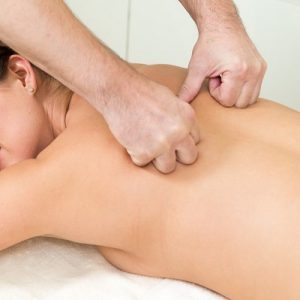 Swedish Massage, which was conceived by Henri Peter Ling, a Swedish physiologist at the University of Stockholm, was publicly introduced in 1812 as a means of improving blood circulation, of relieving muscle stress and pain, of increasing flexibility and of promoting total relaxation of the body and mind.
Swedish Massage, which was conceived by Henri Peter Ling, a Swedish physiologist at the University of Stockholm, was publicly introduced in 1812 as a means of improving blood circulation, of relieving muscle stress and pain, of increasing flexibility and of promoting total relaxation of the body and mind.
The Swedish Massage technique was imported into the United States in the 1850’s by Charles and George Taylor, two American brothers practicing medicine in New York who opened the first two Swedish clinics in the New World.
The first was in Boston, Massachusetts and the second in Washington, D. C. where Ulysses. S. Grant, a famed general during the American Civil War and the 18th President of the United States (1869 – 1877), allegedly frequented regularly for Swedish Massage treatments.
Since its inception in the early part of the 19th century, Swedish Massage had become one of the most widely used massage techniques in the Western world and it is the basis for a number of other Western massage therapies which include Sports Massage, Deep Tissue Massage and Aromatherapy. To attain its objectives, Swedish Massage utilizes seven basic therapeutic movements:
Effleurage
These are long gliding and soothing strokes which are aimed toward the heart while tracing the natural curves of the body. Massage oils are often used to facilitate smooth movement and to warm the muscles.
Petrissage
These are movements which use strokes that lift, roll or knead soft body tissues. This process draws blood into the area and helps relax tense muscles and fascia as well as the rest of the body.
Pinpoint Pressure
These movements are directed toward points that are knotted or hardened and painful to the touch. Pressure is directed to these points in order to break them down and release the muscle.
Deep Friction
These are very small circular movements which press slightly below the surface of the skin and onto the muscle beneath it. These strokes relax muscles which contracted and tensed due to overuse or as a result of emotional stress at their deeper levels.
Skin Rolling
This movement involves pinching a fold of skin and moving it forward in a rolling motion. This process lifts skin off its connective tissues to promote better blood circulation for the improvement of skin tone.
Tapotement
This movement requires rhythmical tapping with cupped hands or with hands set in the karate-chop position. This practice awakens the body into vitality and the tingling sensation of energy and health.
Finger Brushing
This movement is usually performed at the closing of the Swedish Massage treatment session as fingertips are lightly brushing against the surface of the skin to relax the stimulated muscles while calming the nervous system.
The most outstanding health benefits of Swedish massage are in:
- Relaxing of tired, tense or overused muscles.
- Improving blood circulation without overburdening the heart.
- Increasing flexibility and widening the range of motion by stretching the body’s soft tissues: muscles, tendons, ligaments, skin, joints and connective tissues.
- Stimulating the nervous system while simultaneously relaxing the nerve endings.
- Decreasing the recovery time of strained muscles by cleansing the tissues of lactic acid and uric acid as well as all other toxins and metabolic wastes.
- Bringing the skin to a healthier and more vibrant appearance of wellness.
- Helping the client achieve a feeling of connectedness and body awareness for maintaining a better posture and stance.
- Alleviating pain and any associated discomfort due to muscle tension, fractures, sprains, sciatica and stiff joints.
- Reducing emotional distress.






